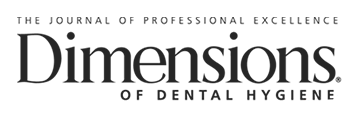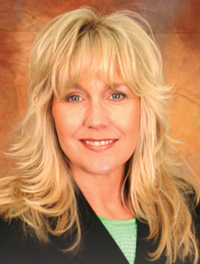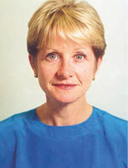
From clinical practice to academia to public health, Dolores M. Malvitz, RDH, BA, MPH, DrPH, has done it all in her long and fruitful career in dental hygiene. Her dedication to lifelong learning spurred her to advance her education, regardless of how long she had been absent from the classroom. Earning a Bachelor of Arts degree in English and Speech 7 years after completing her dental hygiene certificate, Malvitz returned to campus 2 years later to earn her Master of Public Health and Doctor of Public Health degrees. Sharing her talents with academia, she served as chair of the Department of Dental Hygiene, as well as a tenured professor at the University of Oklahoma School of Dentistry in Oklahoma City.
After achieving success in the academic world, Malvitz decided to take on a new challenge. Thus, she began career number three in public health with the United States Centers for Disease Control and Prevention (CDC). Serving in a variety of capacities—from program analyst to team leader in the Surveillance and Research Branch—Malvitz worked for the CDC for 17 years until her pseudo retirement, at which point she became a public health consultant. Her clients have included the CDC, the American Dental Hygienists’ Association, and Nashville Area Indian Health Services (IHS).
What motivated you to further your education?
Although my first boss in clinical practice was an outstanding dentist—valuing my unique skills and encouraging my professional development—I realized how little of the knowledge that exemplifies a “college-educated person” had been provided in my 2-year dental hygiene program. Starting as barely a sophomore, I completed coursework year-round for 3 years to earn a bachelor’s degree while also practicing clinically full time.
After I began teaching at my alma mater, the University of Michigan in Ann Arbor, David Striffler, DDS, MPH, a public health faculty member, offered the candid advice: “If you want an academic career, you really need graduate degrees.” He was right; I stayed in Ann Arbor to pursue graduate degrees in public health because they offered instruction in areas about which I knew little, such as statistics, research methods, epidemiology, and behavioral and social sciences.
How did you begin working for the CDC and what were your responsibilities?
During the last couple years I served as chair of the Department of Dental Hygiene at the University of Oklahoma, I used my faculty practice time to consult with the IHS Area Office dental program. I conducted reviews of clinical and community prevention programs at 26 facilities in the state. This role led to work with a national committee within the IHS—where I met the director of the oral health unit at the CDC, who encouraged me to apply for a vacant position.
Even though the move to CDC involved resigning a tenured full professorship and taking a $4,000 pay cut, I’ve never been sorry. The first several years, I became a “jill-of-all-trades,” writing various documents, reviewing papers, presenting at meetings, and assisting state oral health programs. One of my first assignments was to document the achievement of the very first oral health objectives. For most of my CDC years, I was team lead for surveillance and research within the Division of Oral Health—a group that included epidemiologists, dentists, a statistician, and an economist.
What do you see as your most significant accomplishment?
At the CDC, it was the establishment of new strategies for states to monitor oral health more frequently, less expensively, and in ways that could be understood by administrators who are accustomed to routine data from other public health programs. In an era that pushes us all to “do more with less,” data matter. For example, if it can be shown that a Medicaid program incurs lower per-child costs in fluoridated communities than in nonfluoridated ones, that state’s oral health program may retain its funding for water fluoridation quality assurance activities. The effort to establish true oral health surveillance at the state level took collaboration among many agencies and professional organizations, involved several dental hygienists in key roles, required research to validate new methods, and remains ongoing.
What keeps you working part-time at a point in your career when most others have chosen to retire?
My work as a consultant for the CDC as well as other clients—including a university for which I created an online graduate health behavior course—offers a number of important benefits. Among these are intellectual stimulation; social interaction with professionals whom I respect; problem-solving opportunities; and immersion in scholarly work that, in my previous position as a manager, could seldom occupy my full attention. I believe my efforts make a difference. Of course, my work also provides additional funds for traveling and enjoying the arts, as well as taking classes at Emory University in Atlanta.
What are the biggest changes in the dental hygiene profession since you began your career?
Practically everything has changed since I started practicing at just 19 years old. Most noteworthy is the fact that I no longer need to explain what a dental hygienist does—which was a frequent occurrence during my clinical career.
What advice would you give dental hygienists who have just finished school and are embarking on their careers?
New graduates need to continue to learn each day. They should critically evaluate everything they read or hear, especially regarding clinical techniques, patients’ self-care procedures, the latest behavioral science “magic bullet,” and new products touted as miracle-workers. If their formal dental hygiene education did not provide the necessary skills to make evidence-based decisions, attaining this expertise must be a top priority. Finally, new dental hygienists should consider the health of the community as a whole—looking beyond the individual patient seeking treatment. They should find ways to use public health principles to engage their communities.




